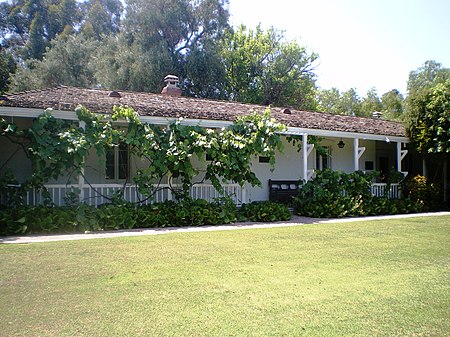Centinela Adobe

The Centinela Adobe, also known as La Casa de la Centinela, is a Spanish Colonial style adobe house built in 1834. It is operated as a house museum by the Historical Society of Centinela Valley, and it is one of the 43 surviving adobes within Los Angeles County, California. The Adobe was the seat of the 25,000-acre (100 km2) Rancho Aguaje de la Centinela, a Mexican Alta California-era land grant partitioned from the Spanish Las Californias era Rancho Sausal Redondo centered around the Centinela Springs. The Centinela Adobe, which is the Centinela Valley's oldest residence, was built by Ygnacio Machado in 1834. Since then, farmers, ranchers, a Scotsman, and Inglewood's founding father, Daniel Freeman, have lived in the structure. It is the oldest building in the area and has been called the "Birthplace of Inglewood".
Excerpt from the Wikipedia article Centinela Adobe (License: CC BY-SA 3.0, Authors, Images).Centinela Adobe
Midfield Avenue, Los Angeles
Geographical coordinates (GPS) Address Website External links Nearby Places Show on map
Geographical coordinates (GPS)
| Latitude | Longitude |
|---|---|
| N 33.96758 ° | E -118.37226 ° |
Address
Centinela Adobe
Midfield Avenue 7634
90045 Los Angeles
California, United States
Open on Google Maps









